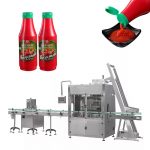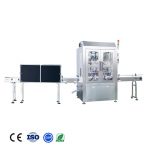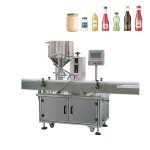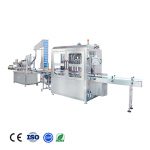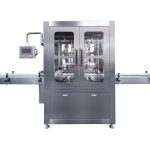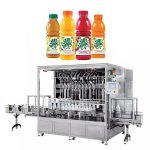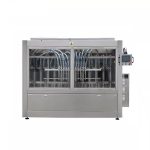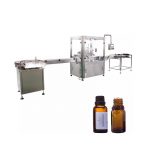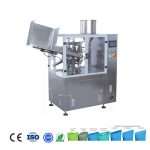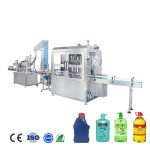What is a bottom up filling machine?
A bottom-up filling machine is a type of automated packaging equipment that is used to fill containers with liquid or semi-solid products. These machines operate by filling containers from the bottom up, rather than the more traditional method of filling from the top down.
There are several benefits to using a bottom-up filling machine, including improved accuracy and efficiency in the filling process, reduced waste and spills, and improved product quality.
One of the main advantages of bottom-up filling machines is their ability to accurately dispense product into containers. This is achieved through the use of sensors and other control systems that measure the volume of product being dispensed and adjust the flow rate as needed to ensure that each container is filled to the correct level.
In addition to improved accuracy, bottom-up filling machines also offer higher filling speeds compared to other types of filling equipment. This can be particularly beneficial in high-volume production environments where time is of the essence.
Another advantage of bottom-up filling machines is that they can help to reduce waste and spills during the filling process. This is because the product is dispensed from the bottom of the container, rather than being poured from the top. As a result, there is less opportunity for the product to spill or splatter, which can lead to less cleanup and reduced product loss.
Finally, bottom-up filling machines can help to improve product quality by reducing the risk of contamination during the filling process. This is because the product is not exposed to the air during filling, which can help to prevent the introduction of contaminants into the product.
There are several different types of bottom-up filling machines available on the market, each of which is designed to meet the specific needs of different industries and applications. Some of the most common types of bottom-up filling machines include:
- Piston-based filling machines: These machines use a piston to dispense product into containers. The piston is controlled by a servo motor, which allows for precise and consistent filling.
- Gravity filling machines: These machines rely on the force of gravity to fill containers with product. They are typically used for low-viscosity products and can be adjusted to fill containers of different sizes and shapes.
- Net weight filling machines: These machines are designed to fill containers to a specific weight, rather than a specific volume. They use load cells to measure the weight of the product being dispensed and adjust the flow rate as needed to achieve the desired weight.
- Volumetric filling machines: These machines are designed to fill containers to a specific volume, using a variety of different technologies to measure and control the flow rate of the product.
In conclusion, a bottom-up filling machine is a type of automated packaging equipment that is used to fill containers with liquid or semi-solid products. These machines offer a number of benefits, including improved accuracy and efficiency, reduced waste and spills, and improved product quality. There are several different types of bottom-up filling machines available, each of which is suited to different industries and applications.
Why Is Bottom-Up Filling Important For Frothing Liquids?
Bottom-up filling is important for frothing liquids because it helps to minimize the loss of product during the filling process. When liquids are frothy or foamy, they tend to be more unstable and can easily spill or splatter if not handled carefully.
By filling containers from the bottom up, the frothy liquid is less likely to spill or splatter, which can help to reduce waste and spills. This is because the product is dispensed from the bottom of the container, rather than being poured from the top. As a result, there is less opportunity for the product to spill or splatter, which can lead to less cleanup and reduced product loss.
In addition to minimizing product loss, bottom-up filling can also help to improve the quality of frothy liquids by reducing the risk of contamination during the filling process. This is because the product is not exposed to the air during filling, which can help to prevent the introduction of contaminants into the product.
Overall, bottom-up filling is an important consideration when filling containers with frothy liquids, as it can help to improve accuracy, efficiency, and product quality while minimizing waste and spills.

